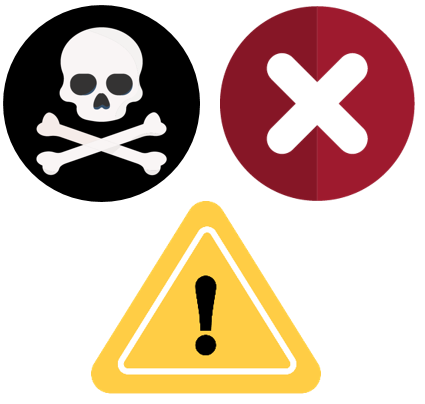Toxic chemicals in your home
Many common household products contain known toxic chemicals, which is why they come with warning labels like Poison! Danger! Caution! Warning! But many products can also contain toxic chemicals that are not included on the label that can be just as hazardous – such as PFAS (per- and polyfluoroalkyl substances), phthalates, flame retardants, and more.
Learn how to:
- Identify toxic products.
- Reduce the impacts of toxic chemicals in your home.
- Safely dispose of hazardous household products.
Many common household products can contain hazardous chemicals, which is why they come with warning labels, like Danger, Warning, Poison, or Caution.
- Store these products in bins, trays, or other storage options away from children and pets and away from any heat sources.
- Keep the labels on so everyone knows what the product is.
- Dispose of hazardous household products properly.
Never dispose of hazardous household products in the trash, sink, drain, or toilet.

Look for priority toxic chemicals
Household products can contain priority toxic chemicals you may be unaware of due to the fact they are not required on the label, such as:
- PFAS (per- and polyfluoroalkyl substances): Often found in products marketed as waterproof, or stain- and water-resistant.
- Flame retardants: Used to make products fire resistant or fireproof.
- Phthalates: Often found in fragrances and products that require flexible plastics.
- Lead: Found in a wide variety of products.
Here are some common products and the chemicals they could contain:
| Product | Possible chemical(s) |
|---|---|
| Cleaning products and disinfectants | PFAS, phthalates |
| Clothing | PFAS |
| Cookware | PFAS, lead |
| Cosmetics | PFAS, formaldehyde, lead, mercury |
| Fragrances and perfume | Phthalates |
| Furniture and textiles | PFAS, flame retardants |
How to reduce your exposure to toxic chemicals
Apply safer cleaning practices
Toxic chemicals, when released from products that contain them, can build up in dust and the air we breathe. You can apply some simple practices at home to reduce your exposure. To learn more:
- Go to our Healthy Home Guide webpage for cleaning tips and nontoxic cleaner recipes.
- Read our Healthier Living Starts at Home guide.
Shop for safer products
By using products in your home that are already nontoxic or less toxic, you can reduce your exposure to chemicals. To learn more:
- Find out how to shop for safer products.
- Read our guide, How Can Apps Help Me Find Safer Products?
Dispose of hazardous household products properly
Never put toxic chemicals in the trash or down the drain, sink, or toilet. Disposing of products that contain toxic chemicals properly can go a long way toward ensuring those chemicals stay out of the environment. To learn more:
Frequently asked questions
Related links
Contact information
Safer Products for Washington
SaferProductsWA@ecy.wa.gov
360-407-6700
Hazardous Substance Information and Education Office
HSIEO@ecy.wa.gov
800-633-7585
Safer Products for Washington is funded by state legislative funding. The Hazardous Substance Information and Education Office is funded in partnership with the Washington State Department of Labor and Industries by the Worker and Community Right-to-Know Fund.


